Ford Mustang (1999-2004) Service Manual: Trim Panel - Door
Removal
All vehicles
1. CAUTION: Use a shop towel or similar material between the tool and the front door trim panel or damage to the front door trim panel may occur.
Position the window regulator switch plate (14527) aside.
1. Pull at the service notch.
2. Lift to release the clip at the rear edge.
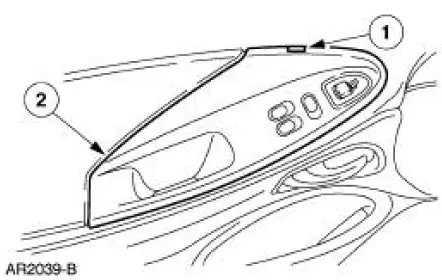
2. Remove the window regulator switch plate.
1. Disconnect the power mirror electrical connector.
2. Remove the screws and the window regulator switch plate.
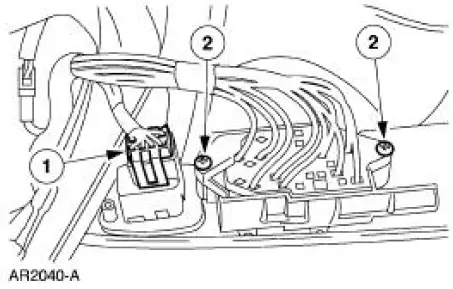
3. Remove the door latch release handle cup (22634).
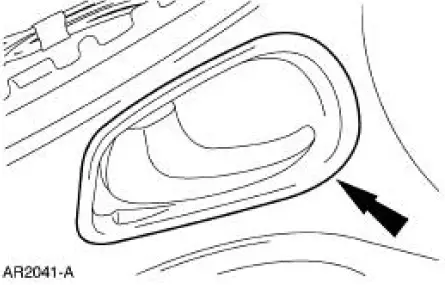
4. Remove the cover.
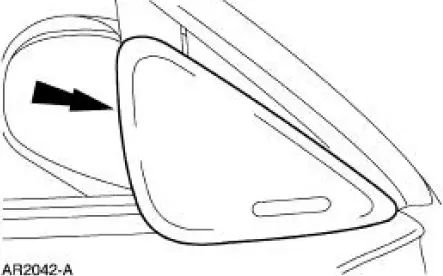
Vehicles with Mach 460 Premium Sound System
5. Remove the screw and the speaker.
- Disconnect the electrical connector.
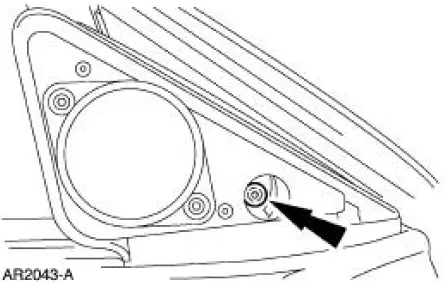
All vehicles
6. Remove the screws.
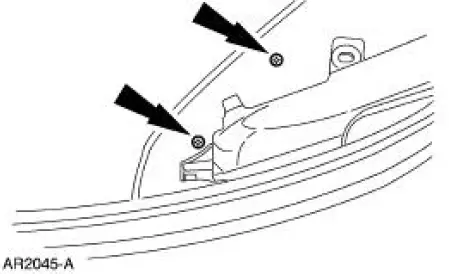
7. Remove the door trim panel (23942).
1. Remove the pin-type retainer.
2. Lift up the door trim panel to remove.
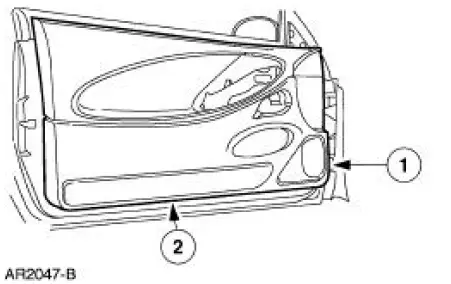
Installation
1. To install, reverse the removal procedure.
 Interior Trim and Ornamentation
Interior Trim and Ornamentation
General Specifications
Torque Specifications
Interior Trim
The interior trim consists of:
A-pillar lower trim panels
door trim panels
headliner (coupe)
package tray trim panel (coup ...
 Trim Panel - Quarter, Coupe
Trim Panel - Quarter, Coupe
Removal and Installation
1. Remove the upper quarter trim panel. For additional information,
refer to Trim Panel-Upper
Quarter in this section.
2. Remove the scuff plate.
3. Remove the pin ...
Other materials:
Vehicle storage
If you plan on storing your vehicle for an extended period of time
(30 days or more), read the following maintenance recommendations to
make sure your vehicle stays in good operating condition.
All motor vehicles and their components were engineered and teste ...
Shock Absorber
Removal
WARNING: All vehicles are equipped with gas pressurized shock absorbers
which will
extend unassisted. Do not apply heat or flame to the shock absorbers during
removal or
component servicing. Failure to follow these instructions can result in personal ...
Powertrain/Drivetrain Mount Neutralizing
WARNING: The electrical power to the air suspension system must be shut
off prior to
hoisting, jacking or towing an air suspension vehicle. This can be accomplished
by turning off
the air suspension switch. Failure to do so can result in unexpected inflation ...
